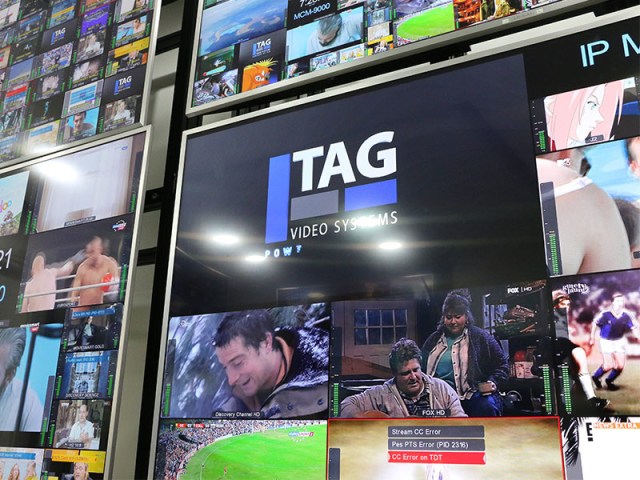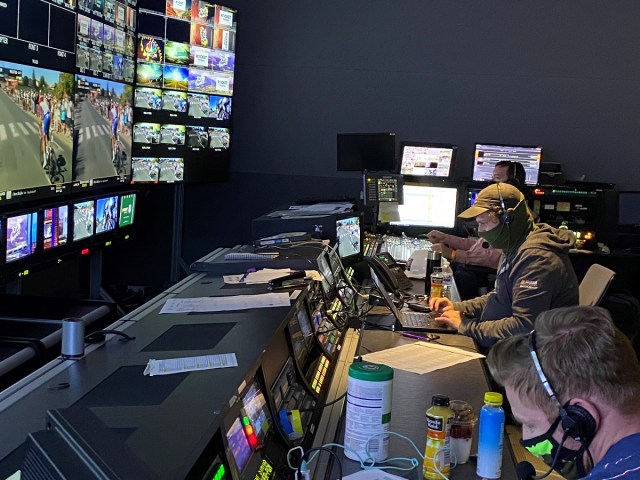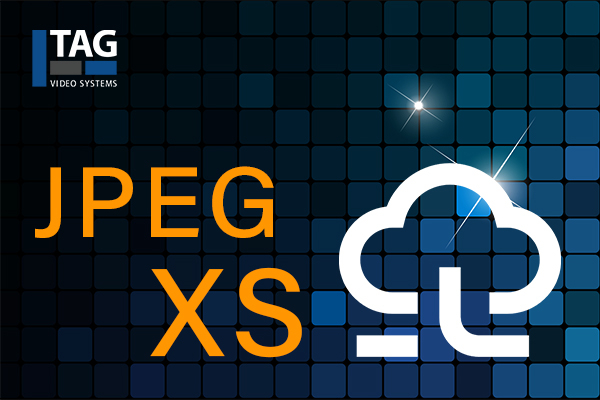
NBC Olympics has selected TAG Video Systems to provide OTT monitoring and multiviewing for its production of the Games of the XXXII Olympiad. TAG Video Systems is providing NBC Olympics with an integrated software-based IP probing, monitoring and multiviewer solution to monitor MPEG Transport Streams originating in Tokyo, which are then logged, categorized and archived in NBC Sports’ International Broadcast Center in Stamford, Conn.
The system runs on COTS off-the-shelf servers and gives NBC Olympics the ability to view metrics and evaluate the health of the signals every step of the way. It also allows NBC Olympics the flexibility to custom configure the broadcasts on its multiviewers to fit any desired scenario.

TAG Video Systems recently claimed an industry first by supporting JPEG XS to allow live production in the cloud. For this application, JPEG XS is a format that can answer the need for visually lossless quality with microseconds delay — significant concerns as more broadcasters seek to migrate their live production workflows where overall contribution quality and latency are critical.

JPEG XS provides the benefits of uncompressed IP workflows over long-distance remote and cloud production environments without the expense and complexity of engineering and implementing an uncompressed network and cloud connectivity.
Integration of JPEG XS into the TAG MCM-9000 was instigated by NBC Olympics for its coverage in Tokyo and by FOX for its cloud Media Center in Tempe, Arizona running in AWS to enable low-latency, cloud-based playout for live workflows. The FOX Media Center has the capacity to manage and distribute hundreds of thousands of hours of programming every year to over 200 FOX-affiliated stations and more than 800 distribution partners across the country.
TAG Chief Architect Paul Briscoe told NAB Amplify, “These broadcasters along with almost every other faced exceptional challenges to their abilities to produce live sports since early 2020 due to COVID-19. The need to move from centralized production to off-site and distributed workflows required the early use of emerging technologies which normally would have followed a more managed curve of adoption, both in technical qualification and operational development.
“The need to move from centralized production to off-site and distributed workflows required the early use of emerging technologies which normally would have followed a more managed curve of adoption, both in technical qualification and operational development.”
— Paul Briscoe
“These included two major new elements — cloud-resident production infrastructures and use of JPEG-XS transport. Separately, these are seismic changes to production workflow and system designs, and together represent a wholesale change-out of well-established foundations.
“The issues encountered are many, from how to pull together the connectivity required to emulate the integrated production environments with the operational capability and technical integrity required, to adoption of new methods imposed by the cloud and geo-dispersion of resources.
“As clients experimented, evolved and established new ways of working, we shared that journey, providing proof-of-concept technology prototypes, helping understand and resolve multi-vendor interoperability issues and most importantly, enabling them to establish confidence in their new technologies and techniques,” said Briscoe.

JPEG XS Optimized for Visually Lossless Compression
While NBC Olympics is innovating for Tokyo coverage, support for JPEG XS has appeal for a much broader audience. TAG Zero Friction Officer Kevin Joyce said, “Finding a workable, effective and budget-pleasing path to production in the cloud using compression technologies is becoming a huge priority for our broadcast customers. JPEG XS potentially reduces cloud bandwidth and network utilization by 90% without sacrificing quality or latency.
“So, it was a no-brainer for us; we added support to our MCM-9000 platform, the first in a cloud monitoring platform to offer it natively. We’re also the only monitoring, probing and multiviewing solution that offers both JPEG 2000 and JPEG XS support without requiring a GPU or FPGA, which allows our customers to run in much more economical cloud instances,” said Joyce.
Optimized for contribution, JPEG XS allows broadcasters to preserve their original content fidelity as they transfer content from live events between and within 2110 facilities and the cloud for remote production applications. While the format provides a pristine image quality — critical in live productio — its extremely low latency unlocks another key to successful remote operation and real-time switching in the cloud. Low latency combined with compression allows these high-quality signals to transit over available and economical network connections resulting in reduced costs and increased operational agility.
The JPEG XS (ISO/IEC 21122) standard specifies a compression technology with an end-to-end latency of a few lines, at a low implementation complexity. For example, this allows hardware implementations that do not require external memory.

Its design offers various degrees of parallelism allowing for efficient implementation on various platforms such as FPGAs, ASICs, CPUs and GPUs. In addition, JPEG XS excels with high multi-generation robustness and is particularly optimized for visually lossless compression as defined in ISO/IEC 29170-2 for both natural and synthetic images.
Typical compression ratios are up to 10:1 for 4:4:4, 4:2:2, and 4:2:0 images but can also be higher depending on the nature of the image or the requirements of the targeted application. It supports various pixel formats, including raw Bayer, classic RGB and the typical YUV representations, all up to 16 bits per component.
Moreover, the codec allows for a very precise bit-rate control to accurately match the available bandwidth, e.g. Gigabit Ethernet, and it offers an end-to-end delay equal to a fraction of a frame. The standard also offers lossless compression of image data with a precision of up to 12-bits per component.
All of these properties allow JPEG XS to be applied in applications which transported uncompressed image data before. This includes, among others, professional video links (3G/6G/12G-SDI), IP transport (SMPTE 2022-5/6 & SMPTE 2110), real-time video storage, memory buffers, omni-directional video capture system, head-mounted displays for Virtual or Augmented Reality and image sensor compression.


Discussion
Responses (1)